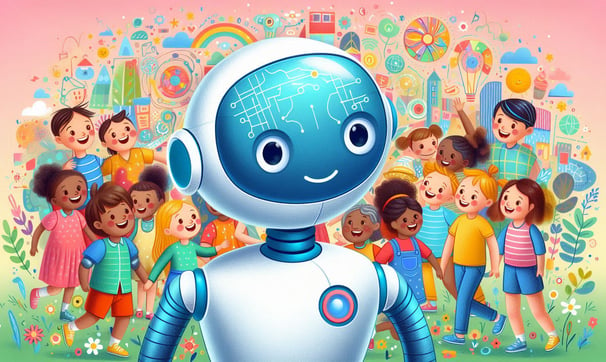Ai And Anthropomorphism
AI WORLD


This article explores the intersection of AI and anthropomorphism, examining why we anthropomorphize, how it affects our relationship with AI, and the ethical and societal implications.
Anthropomorphism, the tendency to attribute human characteristics to non-human entities, has been a part of human culture for centuries. From ancient myths to modern cartoons, humans have personified animals, objects, and even natural phenomena. With the advent of artificial intelligence (AI), this phenomenon has entered a new era. AI systems, particularly those designed to interact with humans, often evoke anthropomorphic responses. This article explores the intersection of AI and anthropomorphism, examining why we anthropomorphize, how it affects our relationship with AI, and the ethical and societal implications.
Why Do Humans Anthropomorphize?
Anthropomorphism stems from our innate desire to understand and relate to the world around us. Key psychological and cognitive factors include:
Pattern Recognition: Humans are hardwired to recognize patterns, including faces and voices. AI systems with human-like traits or behaviors naturally trigger these tendencies.
Social Connection: As inherently social creatures, we seek connection and communication. Anthropomorphism allows us to build emotional bonds with non-human entities.
Cognitive Bias: The human mind often interprets ambiguous stimuli as familiar or human-like, leading us to perceive machines as having intentions or emotions.
These tendencies are amplified in AI systems that use natural language processing, realistic avatars, or emotional simulation.
Anthropomorphism in AI Design
AI developers often intentionally design systems to evoke anthropomorphic responses, as these can enhance user experience and engagement. Examples include:
Voice Assistants: Devices like Siri, Alexa, and Google Assistant use conversational tones and personalized responses to create a sense of companionship.
Robots: Humanoid robots such as Sophia or Pepper mimic human expressions and gestures, fostering empathy and trust.
Chatbots: AI-driven customer service agents simulate conversational nuances to appear more relatable and effective.
These designs exploit our anthropomorphic instincts to make AI systems more intuitive and appealing.
The Benefits of Anthropomorphizing AI
Enhanced Interaction: Human-like characteristics in AI can make technology more accessible, particularly for individuals less familiar with advanced systems.
Emotional Support: Anthropomorphic AI systems, such as therapy bots or virtual companions, can provide comfort and reduce loneliness.
Educational Tools: Human-like AI can engage learners more effectively, making complex topics easier to understand.
Challenges and Risks of Anthropomorphism in AI
Despite its benefits, anthropomorphizing AI raises significant challenges:
Overtrust: Users may attribute capabilities or intentions to AI that it does not possess, leading to misplaced trust.
Ethical Concerns: Misleading anthropomorphic designs can blur the line between human and machine, raising questions about transparency and accountability.
Dependency: Emotional bonds with anthropomorphic AI may reduce human-to-human interaction and foster unhealthy dependencies.
Ethical Implications
The intentional design of anthropomorphic AI raises ethical concerns:
Manipulation: Anthropomorphic traits can be used to manipulate emotions, particularly in advertising or persuasion.
Deception: Creating AI that mimics human behavior too closely may deceive users into believing it possesses consciousness or moral responsibility.
Cultural Sensitivity: Anthropomorphic AI must account for cultural differences in perceptions of human-like traits to avoid alienating or offending users.
The Role of Culture in Anthropomorphism
Cultural factors significantly influence how individuals perceive anthropomorphic AI. For instance:
Western Cultures: Emphasize individuality and often view anthropomorphic AI as companions or assistants.
Eastern Cultures: Tend to embrace collectivism and may perceive anthropomorphic AI as integrated members of society.
Designing AI systems that align with diverse cultural expectations is crucial for global acceptance and effectiveness.
Future Directions: Beyond Human-Like AI
As AI evolves, developers may move beyond anthropomorphism to create systems that are functional without mimicking human traits. Potential future approaches include:
Minimalist Design: Prioritizing functionality over human-like characteristics to reduce deception and enhance clarity.
Transparent AI: Ensuring users understand the machine nature of AI while still benefiting from its capabilities.
Adaptive Interfaces: Allowing users to customize the level of anthropomorphism to suit their preferences and needs.
Philosophical Questions
The rise of anthropomorphic AI prompts profound philosophical questions about identity, agency, and humanity:
What defines "humanness" in an entity?
Can machines truly possess personhood, or is it merely a projection of our own perceptions?
What responsibilities do we have toward anthropomorphic AI that evokes emotional responses?
Conclusion: A Double-Edged Sword
Anthropomorphism in AI is both a powerful tool and a potential pitfall. It can make technology more relatable and impactful, but it also risks misleading users and fostering overreliance. As AI continues to integrate into society, balancing anthropomorphic design with ethical considerations will be essential. By understanding the psychological roots and societal impacts of anthropomorphism, we can navigate this evolving relationship with clarity and responsibility, ensuring AI serves humanity without compromising our values or understanding of what it means to be human.
